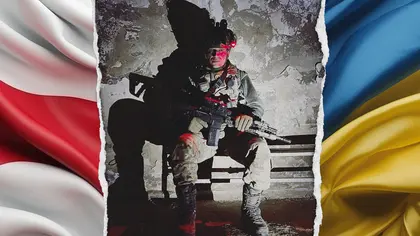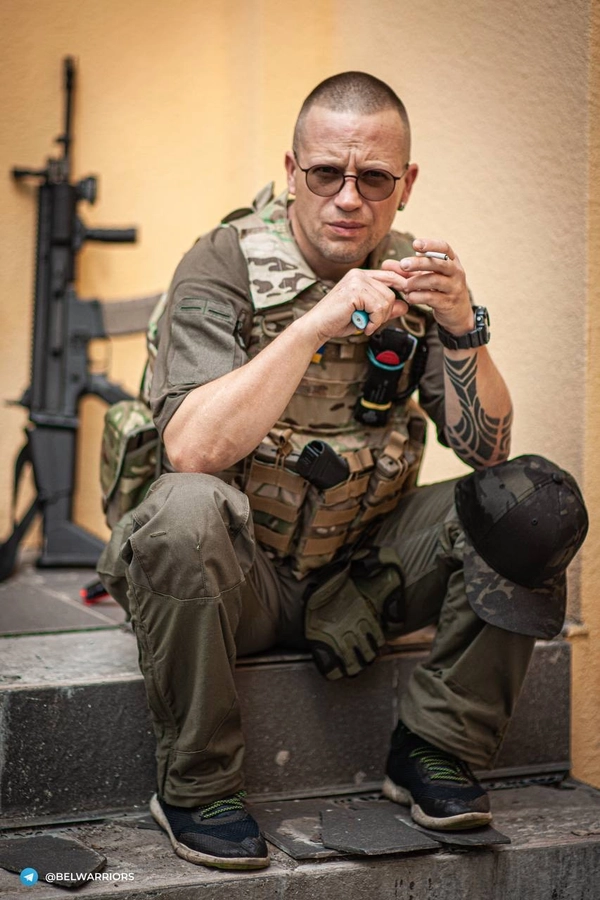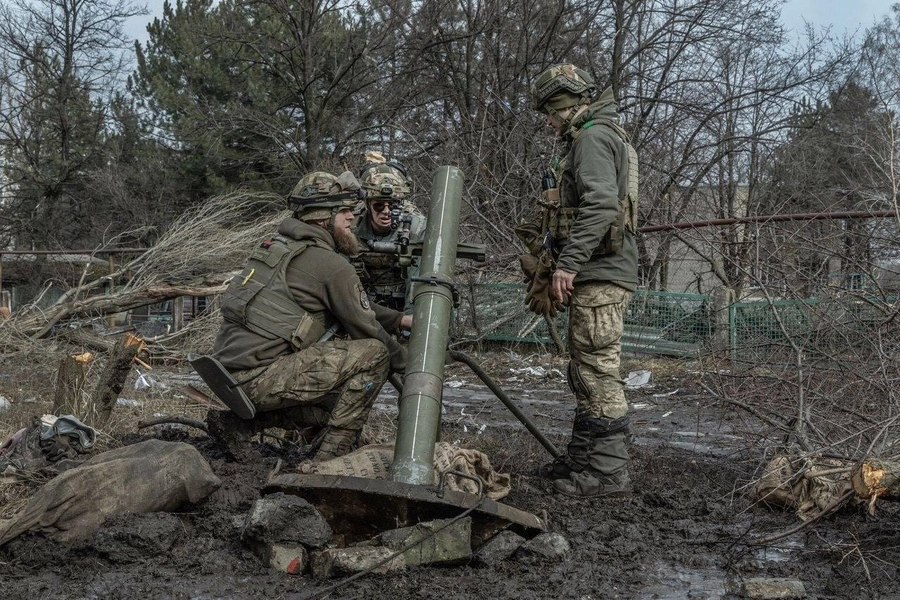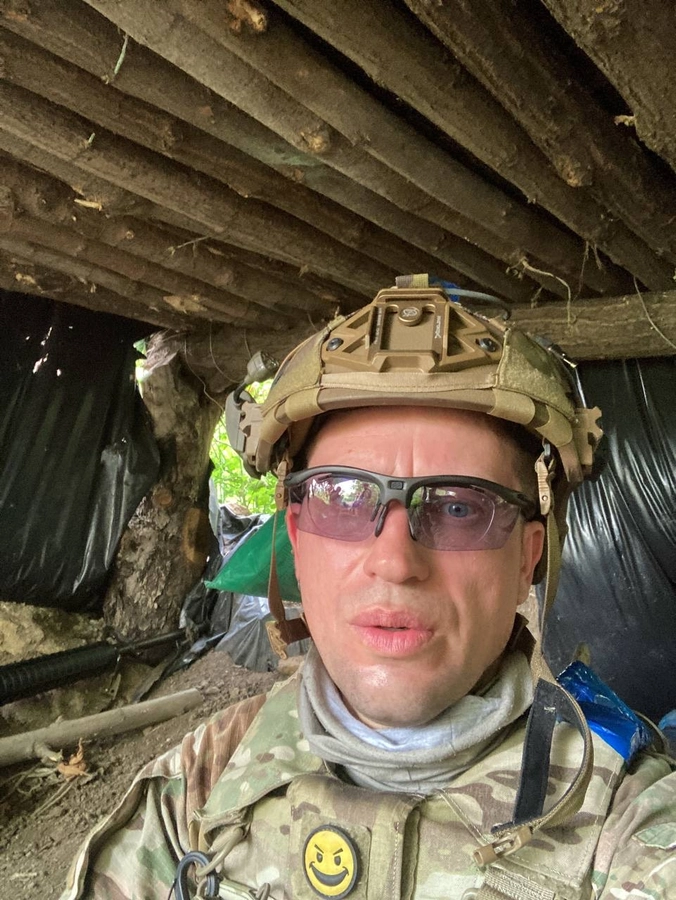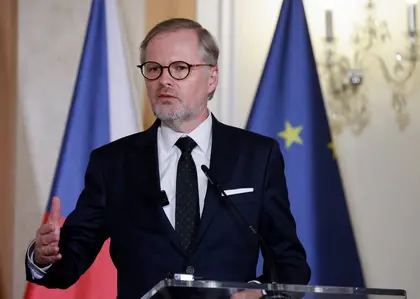A Belarusian volunteer who goes by the call sign “Mark,” in early 2022 he made the difficult choice to travel to Ukraine and join the ranks of a unit of the Armed Forces of Ukraine (AFU) composed of other Belarusian volunteers, officially known as the Kastus Kalinowski Regiment, which is under the command of the Main Intelligence Directorate of the Ukrainian Defense Ministry (HUR).
Kyiv Post spoke with Mark in an exclusive interview to learn more his experiences in this unique regiment, and what led him to risk it all in defense of a country not his own.
JOIN US ON TELEGRAM
Follow our coverage of the war on the @Kyivpost_official.
Photo from personal archive
Mark, 43, said he was never politically active until certain events in 2020, when his native Belarus became engulfed in large-scale protests after the ascension to the presidency of self-proclaimed leader Alexander Lukashenko.
The serviceman explained: “With bandits, you can only speak in the language of force, and Lukashenko and his government are indeed bandits. They can only be motivated to make changes out of fear.”
“I was a supporter of armed protest. And when the full-scale war in Ukraine began, I realized that this was our chance, firstly, to help Ukraine, and secondly, to make the maximum contribution to the destruction of Russia, and thirdly, there was a real opportunity to liberate our own country,” Mark said.
So in early March 2022, Mark found himself in Ukraine without any combat experience, as his pregnant wife remained at home in Belarus. It was a dangerous situation, as all relatives of soldiers fighting for Ukraine are persecuted by Lukashenko’s special service, and face the threat of imprisonment.

Russian Ships Blocked From Entering Naval Base in Syria, Stranding Troops, Weapons
“My wife was pregnant there, but when she was eight months pregnant, we brought her here [to Ukraine] because it was too dangerous for her to stay,” he said.
Mark has already become a father. His son was born in Ukraine and is growing up here, but Mark is able to see his family only rarely.
“It’s not a problem to communicate via video. Thanks to Elon Musk, we can even call our family and friends from the position,” Mark said.
He underscored that his wife has always supported his decision.
“When you support your family in everything, and your family supports you in everything… it turns out that you can actually live like that,” he said.
Before Russia’s full-scale invasion of sovereign Ukraine, Mark had his own business, a car body repair service, which only ratcheted up his disdain for the self-proclaimed Lukashenko government, because the administration was constantly putting pressure on small businesses in the country.
Because Mark has extensive experience driving various types of vehicles, he became the driver of a Kozak armored vehicle in his first weeks in Ukraine.
After combat training and studying the basics of medical care, by April and May of 2022, Mark was already in the Mykolaiv direction of the frontline. The Belarusian complained that at first there was barely enough ammunition, but “in principle, we had enough to hold back what we needed to. Then help came and we received SCAR rifles,” referring to the Belgian-made, gas-operated automatic weapons which have become more diffuse amoung Ukrainian soldiers over the course of the war.
“I remember that, at that time, every 12 seconds, give or take, either mines or a shell would explode.”
He said that units there were assigned areas with what seemed like little regard for any particular targets or valuable assets in the vicinity: They were just clearing one zone at a time in a methodical and precise fashion.
“They need a square [of land], and it doesn’t matter if there are houses, not houses, trenches, not trenches, they just cover it and move on to the next square. They worked in squares,” he said.
Photo from personal archive
Mark stayed in the Mykolaiv area for more than three months before his rotation was up. “That’s not to say that we spent all three months in the trenches, it just means we had enough people to rotate.”
After Mykolaiv, the Belarusian fighter was sent to the area of Severodonetsk and Lysychansk, in the Luhansk region of Ukraine. It was one of the most difficult areas for him, as Russian artillery was constantly firing at the Ukrainian forces. In addition, their positions stretched across the Siverskyi Donetsk River, which added to the difficulties, because shortly after the city’s defense began, the Russian army destroyed all three bridges between the two banks.
“Later, when we were giving up the city, we had to stretch cables across the river so that we could cross it very quickly with our hands. If several people are crossing, the pace is very quick. We had to drive around looking for different boats, more boats,” Mark recalled.
After that, the soldier also was on the Zaporizhzhia frontlines, and near Bakhmut. Every day Mark gained new experience, he said, and never stopped learning something new.
“I learn something from each task, I learn something new, which makes it easier for me to continue. It is very important not to get lost in the mentality that you are simply getting used to war,” he says.
Photo from personal archive
The man with the call-sign Mark speaks very simply and clearly about his current routine and about his plans for the future.
“In the morning I wake up and set myself tasks for the day, and in the evening before going to bed I have to clearly understand that I have done 10 out of 10 tasks. This is the maximum that I can put into this war,” said the volunteer.
“I do not want to dream about what I will do when the war is over. I want to understand that I did everything possible in my power to make this war end, and for us to win.”
You can also highlight the text and press Ctrl + Enter


